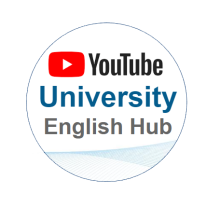Difficulty: Intermediate
Groundbreaking research pioneers new directions by identifying gaps in the literature, and by forming new hypotheses to reconcile contradictory findings.
You can’t achieve this goal without knowing the literature. You have to report the findings of your predecessors and peers accurately in order to confirm or refute them. Moreover, you want your readers to focus on evidence that is central to your study hypothesis, and your own interpretation of your own analysis.
In this tip, we’ll review some common ways to report findings with many example sentences. You’ve probably seen these structures hundreds of times, and used them in your own papers. However, after reading this tip, hopefully you’ll have a better awareness of what your readers think when you use these common phrases and structures.
Method #1 - Use a Reporting Verb
Every academic writer uses reporting verbs like “report”, “demonstrate”, and “show”, which indicate findings or evidence from previous research. Reporting verbs are common and expected in every paper.
Neurogenesis has been shown to be essential to the hippocampus’s ability to tolerate stress (Lehmann, 2013).
Transcription factor Spi-B has been demonstrated to be specifically expressed by M cells in gut epithelium (4).
It has been reported that texture weakening can be achieved by alloying Mg with yttrium and rare earth elements such as cerium or neodymium [1-3].
Note that the sentences above all use the passive voice: i.e., the English does not tell you who ‘showed’ what. At Uni-edit, we have noticed that non-native speakers of academic English seem to prefer passive voice. Advocates of passive voice often claim objectivity as one of its advantages: i.e., because passive voice doesn’t specify the agent, the finding, method, etc. should be true regardless of who does it.
However, you can actually use the active voice to provide more information to readers about the level of evidence, in as many words or fewer. For example, as below, expressions like “many studies” and “several authors” used in the active voice tell the reader that the statement has a high level of confidence.
Many studies have reported that texture weakening can be achieved by alloying Mg with yttrium (Y) and rare earth (RE) elements such as cerium (Ce) or neodymium (Nd) [1-3].
On the other hand, specifying the author of a study by name is an effective strategy for novel, unique, controversial, or uncorroborated findings. This tells your reader a finding is specific to a certain study or studies, and they should consult that reference to learn more about the experimental method, conditions, limitations, etc.
Using the active voice implies the same level of confidence as the passive voice, but immediately and intuitively shows the evidence, in fewer words.
Terahara et al. found that transcription factor Spi-B is specifically expressed by M cells (2008).
Transcription factor Spi-B has been found to be specifically expressed by M cells (Terahara et al., 2008).
Method #2 - State Findings as Facts (but Add a Citation)
Let’s take another look at these sentences: isn’t there other text that conveys the level of evidence? The answer is yes: the citations.
Citations let you report a finding in confident, natural English: just report it as a fact.
Transcription factor Spi-B is specifically expressed by M cells (4).
Process innovation is critical in influencing service industry dynamics (Klepper, 1996).
Texture weakening can be achieved by alloying Mg with yttrium and rare earth elements such as cerium or neodymium [1-3].
Upon reading a sentence like one of these, your readers will think: “This is a finding that has been corroborated by several studies: I can assume it is true.” This is good practice for common knowledge in the field, or assumptions made by many related papers. Reporting verbs like “show” aren’t necessary: the presence of a citation makes it obvious you are referencing the literature.
In some cases, it’s impossible to name all the papers that support a finding: in these cases, you can use “many studies” and “e.g.” or “see”.
Many studies have shown that process innovation is critical in influencing service industry dynamics (e.g., Klepper 1996).
What Does This Have to Do with Confidence?
You probably know intuitively that the Introduction section should progress from broad to narrow: it should start with broad, high-confidence statements about your field and subfield, and gradually introduce specific findings and studies relevant to your research.
For broad statements, it makes sense to present the findings as facts (Method #2); for specific findings, on the other hand, it makes sense to name or enumerate the studies individually (Method #1). Enumerating the number of studies (“one study”, “several studies”, “only a few studies”, etc.) is less precise than naming the authors of the relevant studies, but can imply the level of importance of a finding with greater nuance.
What about Controversial or Contradictory Findings?
Note that good research should not only present well-supported or established findings, but also controversial or contradictory findings. There are several possible reasons to report findings or evidence that might not be completely true:
- The purpose of your study is to corroborate the low-evidence finding.
- Your findings disagree with the other study’s findings.
- To tell your reader there is controversy, or that conflicting findings have been found, or that a final agreement has not been reached.
- To acknowledge a high-profile paper in your field, if you agree with it (or especially if you don’t!).
Summary
As we can see, readers can draw different inferences from language that is only slightly different, even for some of the most common phrases in academic writing! Mastery of reporting verbs like “show”, “demonstrate”, and “report”, combined with efficient use of citations and the active voice, will ensure your readers can separate the uncontroversial background of your study from its new, unusual, and groundbreaking elements.



